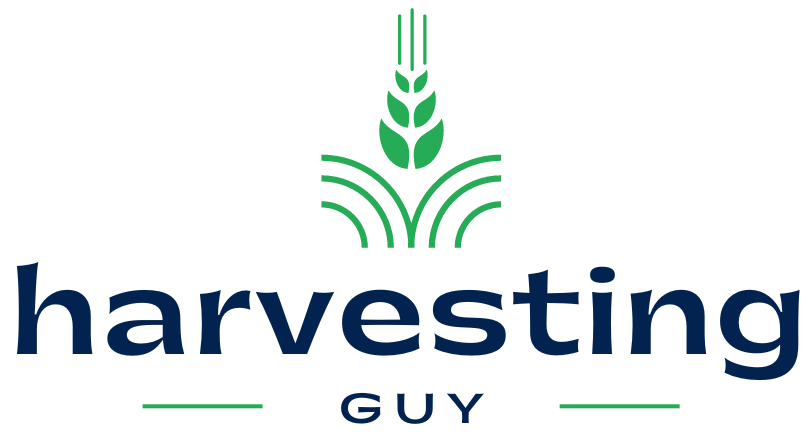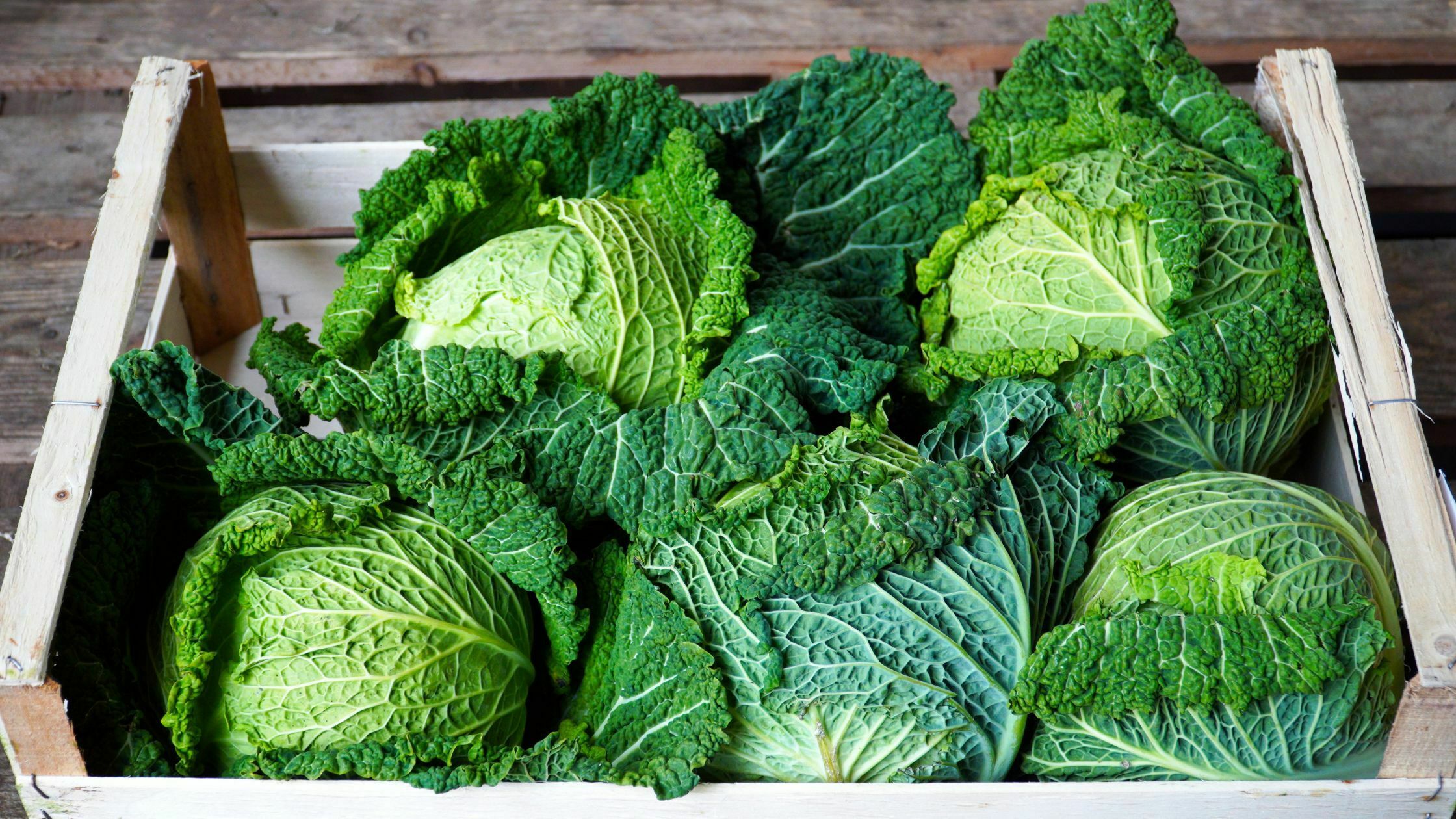Are you a fan of cabbage, kimchi perhaps? Then why not consider growing your own cabbage for all your fresh cabbage needs? That’s right, growing your own veggies is fun, and cabbage is simple enough to do so. However, there are a few things you need to master, including how to harvest cabbage.
With only 22 calories per cup, cabbage is a healthful choice, providing one gram of protein, two grams of fiber, 85% of the recommended daily intake of vitamin K, and 54% of the recommended vitamin C. Are you convinced yet?
Though it may initially sound intimidating, the harvesting process is quite simple, and anyone can do it. All you need is the right equipment and to make sure you follow a few simple guidelines, and you’ll be on your way to becoming a master on how to harvest cabbage.
How to Harvest Cabbage
Harvest head cabbage
- Harvest when heads reach desired size and are firm. Mature heads left on the stem may split. Days to maturity is around 70 days for most green cabbage varieties, and most produce 1- to 3-pound heads.
- Cut each cabbage head at its base with a sharp knife to harvest.
- Remove any yellow leaves (retain loose green leaves; they provide protection in storage) and immediately bring the head indoors or place it in the shade.
- Alternatively, pull up the plant (roots and all) and hang it in a moist cellar that reaches near-freezing temperatures.
- Cut the cabbage head out of the plant to get two crops, leaving the outer leaves and roots in the garden. The plant will send up new heads; pinch off those until only four smaller heads remain. Harvest when tennis ball-size.
- After harvesting, remove the entire stem and root system from the soil to prevent disease. Only compost healthy plants; destroy any with maggot infestation.
How to plant cabbage?
- Before planting the seedlings outdoors, harden off the plants over the course of a week.
- Transplant small plants outdoors on a cloudy afternoon 2 to 3 weeks before the last spring frost date.
- Plant seedlings 12 to 24 inches apart in rows, depending on the size of the head desired. The closer you plant, the smaller the cabbage heads.
How to care for cabbage?
- When seedlings reach about 5 inches tall, thin to leave the desired space between them.
- Mulch thickly around the area to retain moisture and regulate soil temperature.
- Water 2 inches per square foot per week.
- The optimum soil temperature for growth is 60 to 65° F. Cover plants if cold weather is expected.
- Fertilize two weeks after transplanting with a balanced (10-10-10) fertilizer.
- Practice crop rotation.
How do you harvest cabbage, so it keeps growing?
The most successful technique for harvesting cabbage is cutting. Cut at the lowest point possible, leaving the loose outer leaves attached to the stalk. This will allow for a later cabbage harvest of sprouts, which will grow on the stem after removing the cabbage head.
How do you know when cabbage is ready to be picked?
It is extra important to harvest cabbage at the proper time, as cabbage heads harvested too soon or too late do not have as much nutritional value as those harvested at the appropriate time in the plant’s growth cycle. Some varieties of cabbage have a very narrow window of time in which they need to be harvested, with just a few days in which the optimal harvesting time can be met.
Other varieties can go for several weeks in the garden without beginning to deteriorate as long as the weather allows them. A general rule that applies to most varieties is the larger the head, the longer they will hold up while waiting for harvest.
The right time to harvest your cabbage plants will depend on the variety of cabbage you planted, the weather conditions they grew in, and when the heads naturally mature. The size of the heads will not tell you whether they are ripe for picking or not, as cabbage head sizes vary greatly from one to the next. Instead, the firmness of the heads will indicate that your cabbage plants are ready to harvest.
What are some recommended cabbage varieties?
- Primo or Stonehead: Good for early harvests.
- Golden Acre: Known for being quick-maturing.
- Early Jersey Wakefield: Resists splitting. It’s an heirloom, slightly pointed, and 2- to 3-pound heads.
- Blue Vantage and Cheers: These are both disease-resistant varieties.
Does cabbage grow back after you pick it?
Cabbages will not regrow a single central head, but the smaller baby sprouts that do regrow are still tasty and worth harvesting. The leaf axials at the base of these lower leaves will start to grow and form small heads, which you can harvest when they feel firm to the touch, just as with the central head.
How do you pick cabbage from your garden?
- You can go in with your super-strong gloved hand, grab the base of a cabbage head, and pull with all your might. You’ll bring up the entire plant, root, and all in loose soil. You may find a little wrist-twisting is required with this method.
It’s best to do your cabbage picking’ in the morning before it gets too hot and the leaves wilt. - Another approach involves sharp implements and could result in a nursery full of baby cabbages.
Using a very sharp knife or loppers, cut the cabbage head off, leaving a few inches of the stem and some of the large, floppy, worm-hole-ridden leaves intact – and leaving the root in the ground. Since you left a bit of itself behind, the cabbage plant will reward you with new life in about two weeks.
How to store cabbage?
Do not wash cabbage until you are ready to use it. Refrain from washing before storing.
Cabbage can be stored in the refrigerator for up to two weeks, wrapped lightly in plastic. Make sure it is dry before storing. In proper root cellar conditions, cabbage will keep for up to 3 months.
Recommended Product: Glad Press’n Seal Plastic
No products found.
With a quick press of a finger, Glad Press’n Seal Food Wrap keeps food fresh with a leakproof, airtight seal,
Glad Press’n Seal Griptex technology works to cover and stretch across plastic, paper, wood, metal, and glass and keeps food fresh while protecting against leaks or spills with ease.
Glad Press’n Seal is strong enough to contain liquids. Glad Press’n Seal food wrap is the ultimate storage option to seal and cover uniquely shaped items while sealing 10x tighter than any other wrap.
Features:
- BPA free
- Microwave-safe
- Griptex technology
How to preserve cabbage?
Freezer
- Remove any yellowed leaves from the outside of the head.
- Then wash the head thoroughly. Soak the cabbage head in salt water for 30 minutes to dislodge any bugs that might be hiding out.
- Cut the cleaned head into wedges, or separate the leaves. Blanch the cabbage in boiling water for 90 seconds and then plunge the bits into ice water for best results.
- After it’s frozen, toss wedges into freezer bags in bulk. Before sealing, remove as much air as possible from the bags.
- Frozen cabbage will remain tasty for nine to 14 months.
Recommended Product: 365 by Whole Foods Market Freezer Bags
No products found.
These Double Zipper Freezer Bags are the ideal way to freeze fresh foods, leftovers, extra cookies, bread, or any items you want to keep on hand and conveniently thaw when needed.
Our bags are made from 100% Polyethylene and never contain Polyvinyl Chloride (PVC), Phthalates, or Bisphenol-A (BPA).
Features:
- PVC Free
- BPA Free
- Phthalate Free
Dehydrate
- Wash and slice it into thin strips, and arrange them on dehydrator trays.
- Dehydrate at 125-135°F for 7-11 hours.
- Store dehydrated cabbage in glass jars or vacuum-sealed bags.
Recommended Product: Elite Gourmet Food Dehydrator
No products found.
Prepare 100% all-natural dehydrated foods and snacks with no added sugars, additives, or preservatives. No more processed junk food, dry, healthy fruit rolls, trail mix, granola, etc.
Perfect for hobbyists to dry flowers, potpourri, or dough crafts and pet lovers to prepare healthy and delicious 100% natural treats for their furry companions.
From 95ºF to 158ºF, foods are dehydrated at optimal temperatures, and horizontal airflow distributes heat evenly and efficiently.
Features:
- 350 watts
- 5 Trays
Recommended Product: imarku Chef Knife
No products found.
High-carbon stainless steel blade-It is manufactured from high-quality stainless steel that maintains its functionality for a long time.
And to boost its sturdiness, the steel contains 0.6-0.75 carbon. This makes it two times as hard as other knives in its class, as they contain about 0.3% carbon.
The gyutou knife is classified and designed to be a multipurpose knife for professional applications. It cuts, dices, slices, chops, and also cuts meat off bones.
Features:
- Stainless Steel, carbon
- Plain edge
Harvest leaf cabbage
- Begin harvesting leaf cabbage about a month after planting by harvesting the outer leaves using the cut-and-come-again method.
- To do this, harvest only the older outer leaves and allow the center of the plant to send out new leaves.
Additional Tips on How to Harvest Cabbage
- Cabbages are grouped according to when they’re harvested. Spring cabbages may also be harvested young as ‘spring greens,’ which are ready from mid to late spring. Summer cabbages crop from summer into early autumn, while fall and winter varieties cover the remainder of the year.
- Savoy cabbages have a long harvest period stretching from autumn through winter to early spring.
- Spring cabbages may be harvested young and loose as greens for repeated cutting or left to grow on to form a tight head of leaves.
- Harvest head cabbage when heads are well-formed and firm. Harvest head cabbage by cutting the base with a sharp knife.
- When grown from seed, cabbage is ready to harvest in about 80 to 180 days and approximately 65 to 105 days if grown from transplants.
- Once the harvest is complete, remove the roots and stem to prevent soil-borne disease.
- If you are harvesting your cabbage from your garden or buying cabbage from the farm stand, make sure to leave all leaves on the head. The outer leaves of the cabbage head work to protect the inner and more tender leaves, especially helping with moisture retention.



